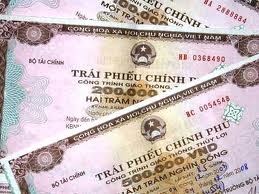Vietnam dollar bonds best in Asia
 The notes handed investors a 10 per cent return, HSBC Holdings Plc indexes show, as consumer price increases slowed to a 12-month low and the trade deficit narrowed.
The notes handed investors a 10 per cent return, HSBC Holdings Plc indexes show, as consumer price increases slowed to a 12-month low and the trade deficit narrowed.
India’s bonds advanced 7.1 per cent and China’s 4.9 per cent, the next best performances among the region’s 11 biggest economies excluding Japan.
Vietnam’s bonds are also in demand this year as higher-yielding securities will probably be least affected by rising treasury yields as the US economy improves, said Sergey Dergachev, a senior portfolio manager in Frankfurt at Union Investment.
Aberdeen Asset Management Plc (ADN) and Union Investment Group, which oversee the equivalent of $526 billion in assets, say they boosted holdings of Vietnam’s global debt in the past year.
“Vietnam is a good hedge for me against a possible rise in US Treasury rates,” Sergey Dergachev said. “Vietnam historically, and also as a high-yield credit, is less susceptible to movements of US Treasury yields than Philippine and Indonesian debt.”
Vietnam’s 6.75 per cent dollar bonds due January 2020 yield 326 basis points, or 3.26 percentage points, more than similar-maturity US Treasuries, while the yield premiums for the Philippines’ 6.5 per cent debt due January 2020 and Indonesia’s 5.875 per cent notes due March 2020 are at 146 basis points and 170 basis points, respectively, according to data compiled by Bloomberg.
Vietnam’s trade gap narrowed as slower lending growth curbed demand for imports. The trade deficit was $150 million in March, down from $279 million in February, preliminary figures from the statistics office showed on March 28.
Slower inflation limited domestic demand for foreign currency, easing pressure for its currency (VND) to devalue and giving the central bank room to bolster its foreign-exchange reserves.
What the stars mean:
★ Poor ★ ★ Promising ★★★ Good ★★★★ Very good ★★★★★ Exceptional
Latest News
More News
- The promotion of ESG via banking (November 21, 2024 | 09:32)
- Standard Chartered committed to Vietnam’s financial success (November 21, 2024 | 09:24)
- Full ESG adoption the priority for Agribank (November 21, 2024 | 09:07)
- Banks entice youth with tech advances (November 21, 2024 | 08:00)
- Banks shaping the future as business advisors (November 20, 2024 | 21:00)
- ESG represents a shift towards sustainability for banks (November 20, 2024 | 13:00)
- GGGI supports Vietcombank’s debut of $80 million green bonds (November 20, 2024 | 11:20)
- SHB and the ESG journey: creating social value in every step (November 19, 2024 | 15:00)
- Banking sector contributes to ESG, green growth, and sustainable development (November 19, 2024 | 14:42)
- ESG implementation in banking: from awareness to action (November 19, 2024 | 12:08)

















 Mobile Version
Mobile Version